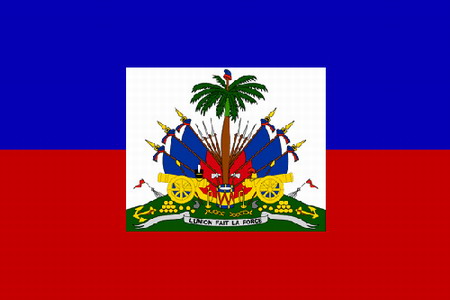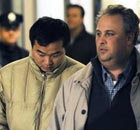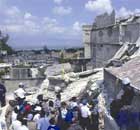Asia-Pacific
Basic facts about Haiti
(Xinhua)
Updated: 2010-01-14 13:46
 |
Large Medium Small |
|
 National flag of the Republic of Haiti. [flagandanthems.com] |
BEIJING: A magnitude-7.0 earthquake hit Haiti on Tuesday local time, collapsing a hospital and damaging government buildings in its capital city of Port-au-Prince. The following are some key facts about the country:
The Republic of Haiti is a Caribbean country, sharing the island of Espanola with the Dominican Republic.
Haiti is the poorest country in the Western Hemisphere with an estimated annual per capita gross domestic product (GDP) of US$390. A staggering 78 percent of Haitians live on less than 2 dollars a day. Only 20 percent have access to clean water and the same portion can read and write.
The country's economy mainly depends on agriculture. But its weak infrastructure makes it hard to feed its people by itself. The country also has a few garment factories and a budding tourism industry.
Haiti, the first country that won independence in Latin America, has been plagued by political instability, social unrests and natural disasters for two centuries.
The United Nations peacekeeping mission in Haiti (MINUSTAH) has been on the ground in the country since mid-2004 after then president Jean-Bertrand Aristide went into exile amid violent unrest.
Currently the MINUSTAH has more than 9,000 military and police personnel and nearly 2,000 civilian staff to help the country re-establish security, build infrastructure and provide humanitarian aid.
Haiti is vulnerable to floods as severe deforestation has left only 2 percent of forest cover. The country was battered by four back-to-back tropical storms in 2008 that killed nearly 800 people and affected an estimated 1 million people.











